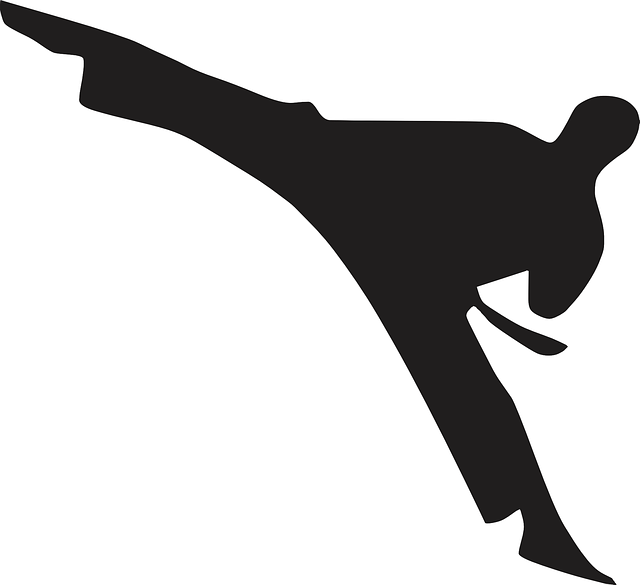When buying karate equipment, it's crucial to focus on attire that balances comfort with functionality for peak performance during practice and competition. A well-fitting gi, or karate uniform, is essential, ensuring it's neither too tight nor too loose, especially important for safety in sparring. Opt for reputable brands offering a range of sizes to accommodate various body types and heights. The jacket, trousers, and belt should all fit perfectly for full mobility. Consider the fabric's density for temperature regulation and suitability for your specific dojo or karate style's requirements. Durability is key, so look for reinforcements and high-quality materials to make your investment last. Additionally, specialized footwear with good grip, protective gear like hand and foot pads, and a mouthguard are necessary for sparring, all contributing to an effective training experience while honoring karate's traditions. Investing in quality karate equipment not only supports proper technique but also signifies the discipline and respect central to martial arts practice.
Exploring the realm of martial arts, one term frequently surfaces in the discourse: the karate gi. This article serves as a comprehensive guide for those looking to “buy karate equipment,” with a focus on understanding the essentials of karate attire. We’ll delve into the types of karate uniforms, their distinctions, and how to select the ideal gear for various styles such as Shotokan and Kyokushin. Whether you’re an aspiring practitioner or a seasoned martial artist, this resource will equip you with the knowledge to make informed decisions when purchasing your karate equipment. From sizing up your options to maintaining your gi, we cover it all, ensuring you’re outfitted for success in your training and beyond.
- Sizing Up Your Options: A Guide to Buying Karate Equipment
- – Understanding the Essentials of Karate Attire
Sizing Up Your Options: A Guide to Buying Karate Equipment

When shopping for karate attire, also known as a gi or keikogi, it’s crucial to consider the sizing and quality to ensure both comfort and functionality during practice and competition. Buying karate equipment involves a few key considerations to ensure you are well-prepared for the discipline. The gi should fit properly; it must not be too tight, as this will restrict your movements, nor too loose, as an ill-fitting garment can hinder your performance and potentially cause accidents during sparring. Opt for a reputable brand or supplier that offers a range of sizes to accommodate different body types and heights. The jacket, trousers, and belt should each be tailored to fit you adequately, allowing for a full range of motion without being overly baggy. When purchasing a gi, consider the weave of the fabric; a heavier weave is suitable for cooler climates or intense training sessions, while a lighter weave is more breathable and ideal for warmer environments. Additionally, ensure that the gi meets the specifications required by your dojo or the style of karate you practice, as different styles may have variations in their uniform requirements. By carefully selecting your karate equipment through a trusted retailer, you’ll be able to focus on perfecting your techniques without distraction from subpar attire. Remember to check for reinforced stitching and durable materials that can withstand the rigors of martial arts practice, ensuring longevity and value for your investment when you buy karate equipment.
– Understanding the Essentials of Karate Attire

When stepping into the realm of martial arts, specifically Karate, understanding the essentials of Karate attire is paramount for practitioners. A traditional Karate uniform, often referred to as a gi, is a key component of the discipline, symbolizing respect and unity among its participants. The gi typically consists of a jacket and pants, both designed for mobility and durability during practice and competition. The jacket, or ‘Uwagi,’ reaches halfway down the thigh, while the trousers, known as ‘Kamese,’ are straight-legged and secured with a belt, or ‘Obi,’ which also serves to hold the jacket closed. When buying Karate equipment, it’s important to seek out gis that adhere to the specifications set forth by the style of Karate you practice, whether it be Shotokan, Goju-Ryu, or another discipline. The fabric should be a blend of comfort and rigidity; not too stiff to limit movement, yet sturdy enough to withstand the demands of sparring and kata performance.
In addition to the gi, other essential Karate attire includes footwear that provides excellent grip, as well as proper protection for sparring. A well-fitted gum shield is crucial to protect the teeth and jaw, while hand and foot pads ensure safety during impact training. When purchasing these items, it’s advisable to opt for gear that offers a balance between comfort and protection, allowing for the full range of movement necessary for Karate techniques. Moreover, as with any sport, the right equipment can significantly enhance performance and prevent injuries. For those looking to buy Karate equipment, it’s essential to consider quality, fit, and the specific needs of their training regimen. Investing in high-quality Karate attire not only supports proper technique execution but also embodies the discipline and respect that are central to the martial art.
When considering the right attire for practicing karate, understanding what constitutes appropriate karate clothes is key for both functionality and respect for the martial art. This guide to buying karate equipment has shed light on the essentials of karate attire, ensuring that practitioners are well-equipped to train effectively. Whether you’re a beginner or an experienced martial artist, the right garb not only supports your movements but also honors the tradition and discipline of karate. Remember, when you buy karate equipment, prioritize quality and fit to ensure comfort and safety during practice. With this knowledge in hand, you are now prepared to select the most suitable attire for your karate journey.
